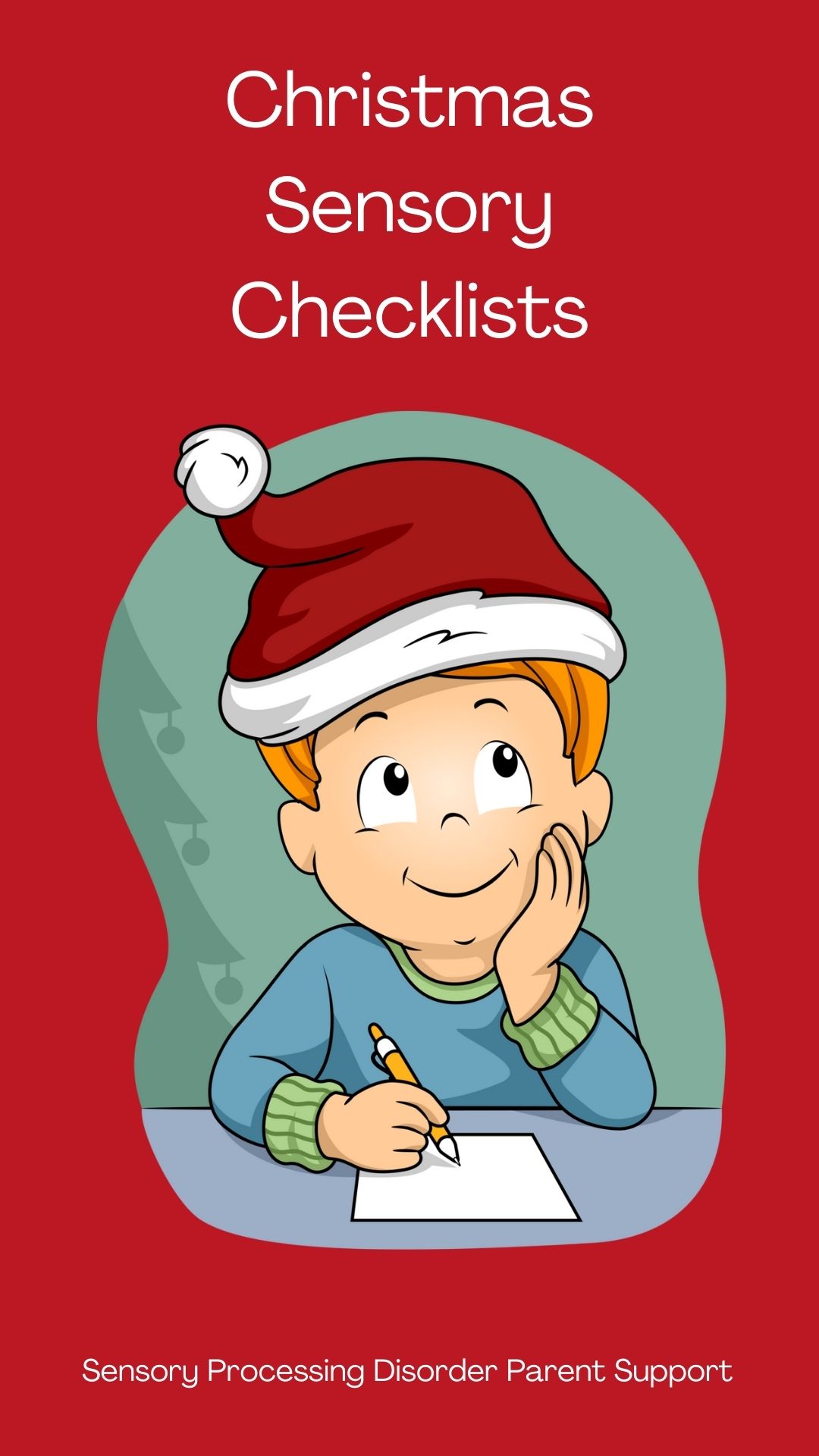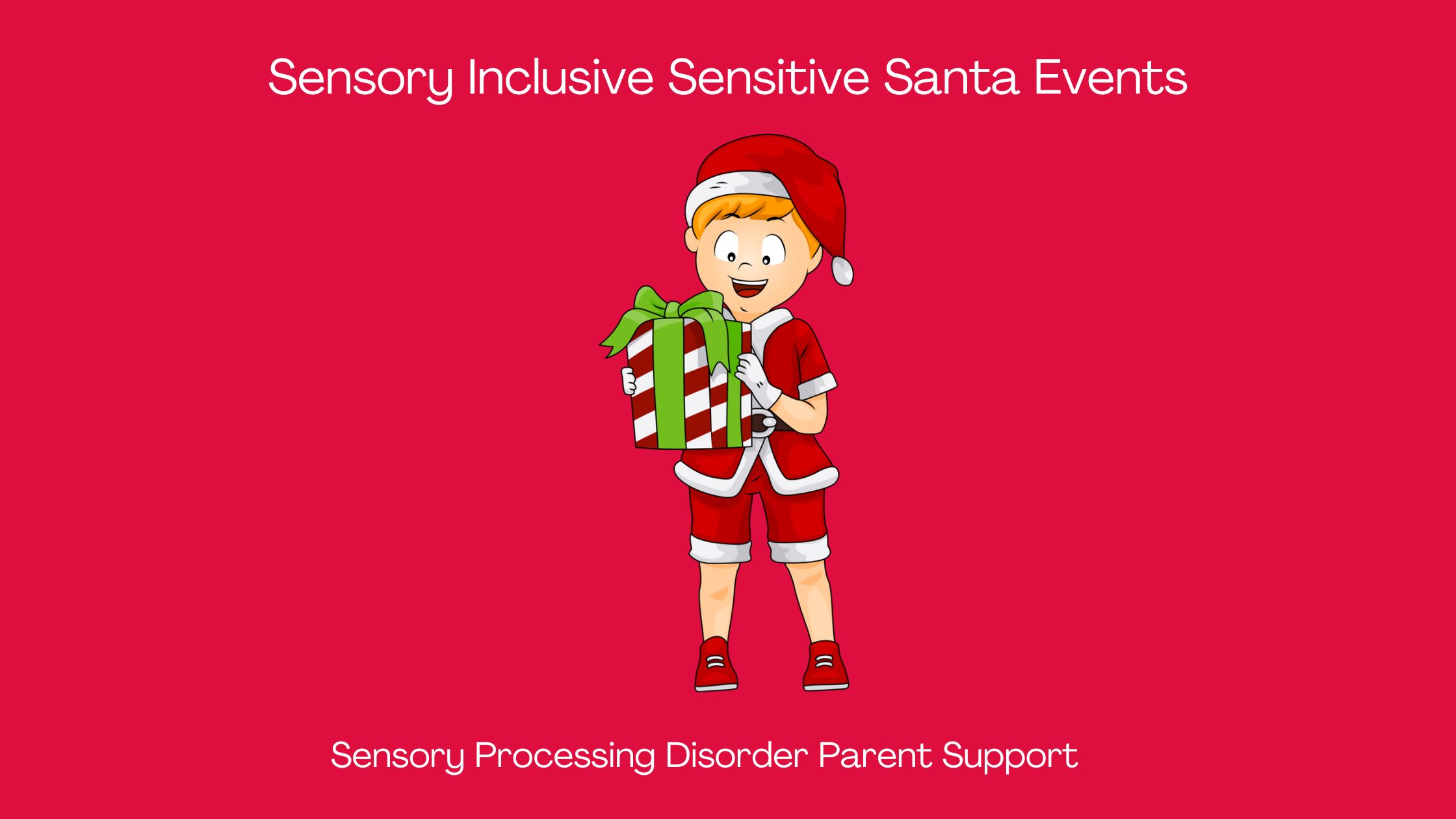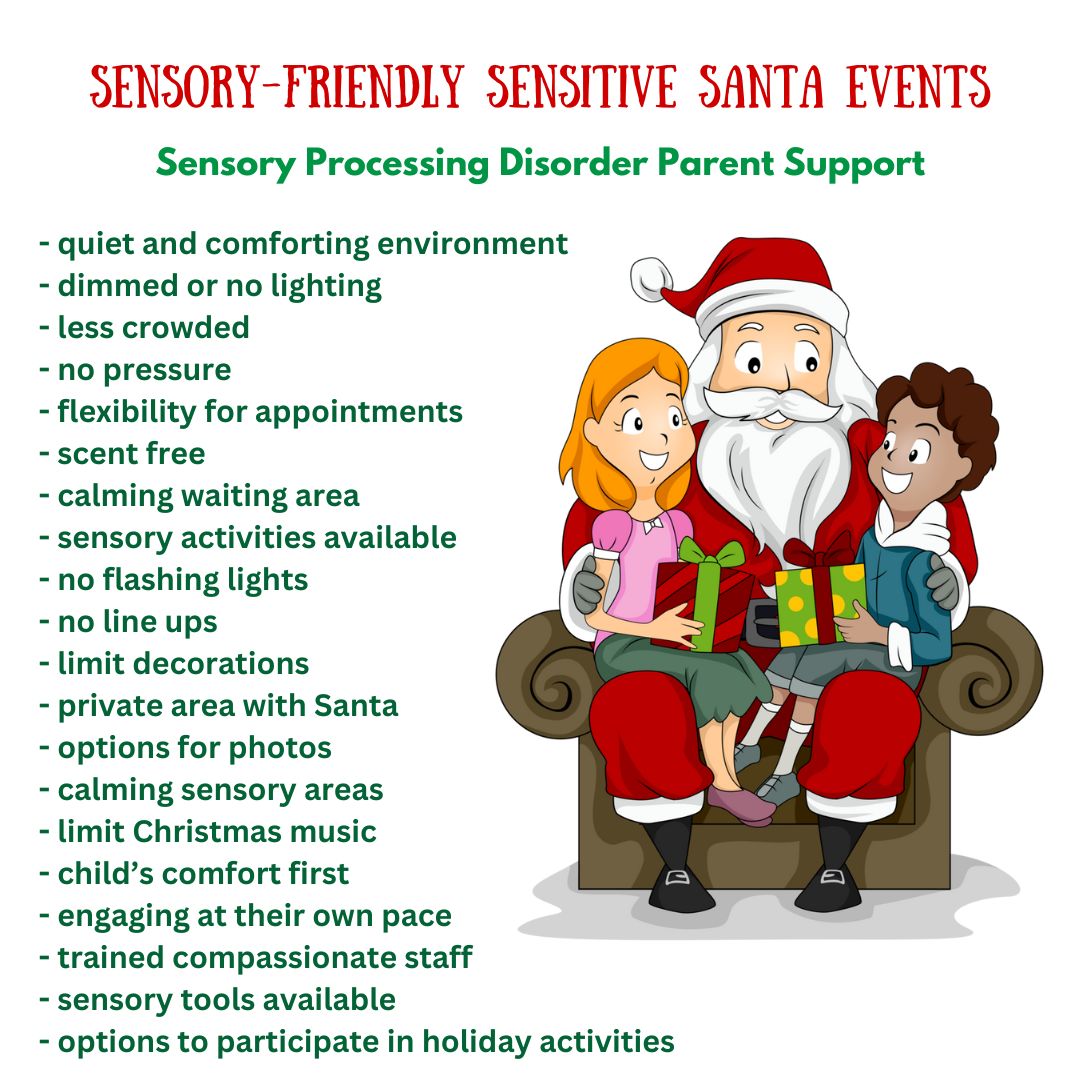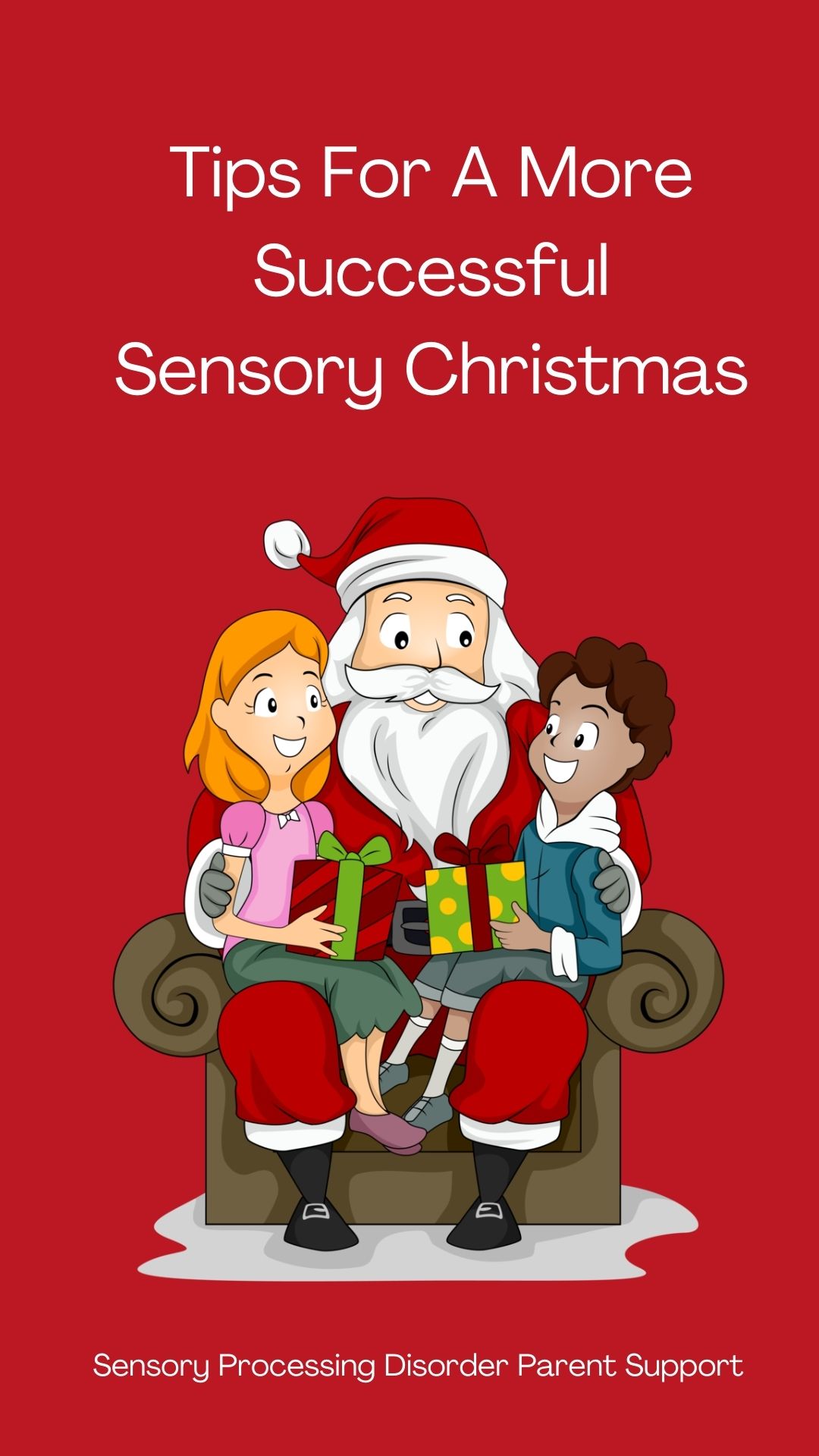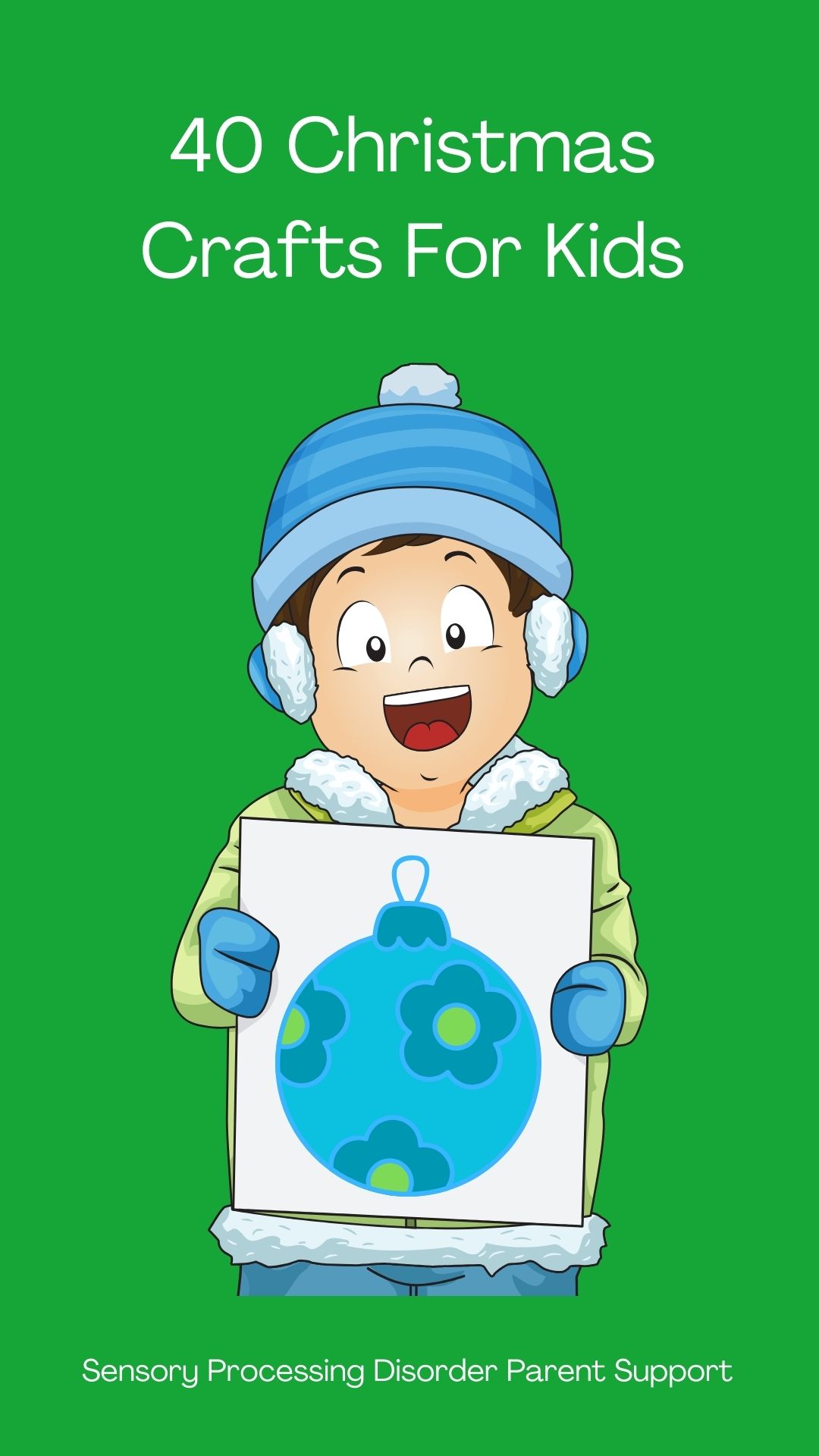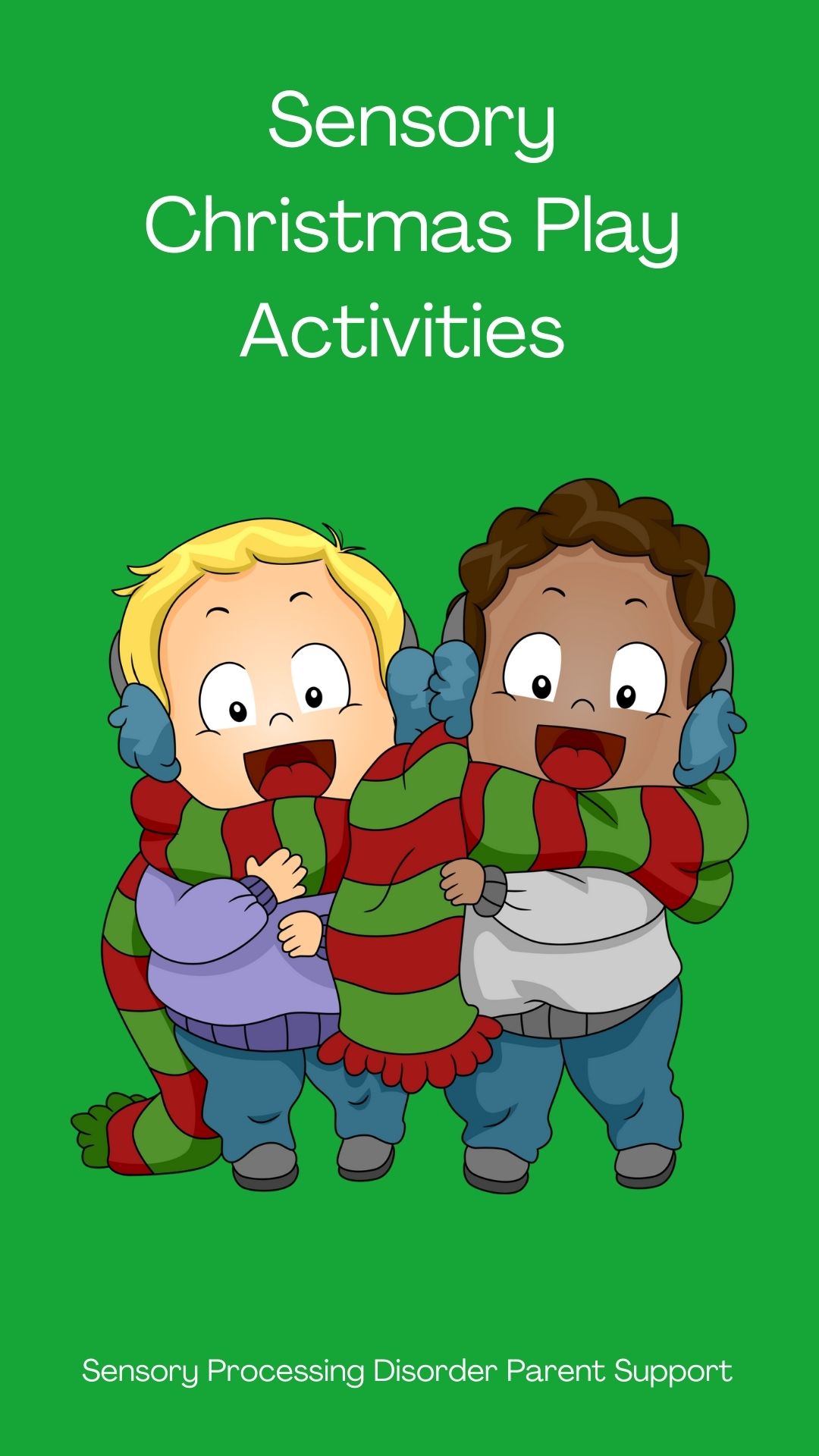Sensory-friendly Santa events are usually in a quieter, less crowded setting. There are usually specific times scheduled for families. The lights at the event may be dimmer and the music could be calming or turned off entirely. This minimizes sensory overload, providing a calmer space for children and adults.
These events can fill up quickly so you may want to schedule your appointment as soon as possible so that you have an appointment for your child.
Parents are often given more time for their visit with Santa without any pressure to keep a strict schedule. This flexibility puts a child's comfort first, allowing them to engage at their own pace when visiting Santa Claus. Staff are usually trained to understand and respond to the needs of children with sensory differences. They use calming techniques ensuring each child feels safe and accepted.
Sensory friendly Christmas events may include different sensory activities such as sensory play stations or quiet areas where a child can take a break if they are feeling overwhelmed. These special holiday events have proven to be greatly beneficial for families who have children with sensory differences.
Children who usually experience anxiety in crowded environments can enjoy the experience of visiting Santa, while creating positive memories. Sensory-friendly Santa events promote inclusivity because holidays can be celebrated by everyone in the community.
There are many different community organizations, local malls, community centers and therapy groups who offer sensory-friendly Santa family events. Search online for sensory-friendly holiday events in your community. Most local autism and sensory processing organizations share information about inclusive sensory friendly Christmas holiday events.
When you are searching for a local sensory friendly Santa event, you may also want to search for silent Santa, sensitive Santa or sensory Santa because they may have a different name for their event.
There are many ways to create a sensory-friendly environment. Consider using dimmer lighting instead of bright or flashing lights. This can significantly reduce visual stimulation. Limit loud music and off quiet spaces where children can go if they are feeling overwhelmed. Avoid strong scents, natural scents or unscented options are best for sensory friendly events.
Offer fidget toys, weighted blankets and comfortable sensory seating. These can help individuals regulate their sensory input. Give children choices if they would want to participate in holiday sensory activities. This can help them feel more in control and less overwhelmed.
Remember that sensory sensitivities are real and can be challenging. Be patient with children who may need breaks or accommodations during festivities.
There are many different options for sensory inclusive activities. Fill sensory bins with different textures like sensory colored rice, beans or pasta. Choose crafts that are calming such as painting or coloring. Enjoy a quiet moment together sharing a favorite holiday story. Playing with sensory play dough can be another great calming sensory friendly activity.
Sensory-friendly Santa events can play an important role in making these traditions accessible to children with sensory processing disorder. Having a supportive environment and understanding the unique challenges some children experience, we can ensure that every child has the opportunity to enjoy the Christmas holidays. If your area does not have a sensitive Santa event, please consider starting your own event. Merry Holidays to all!
Find a Sensory Inclusive Sensory Sensitive Santa event near you!
